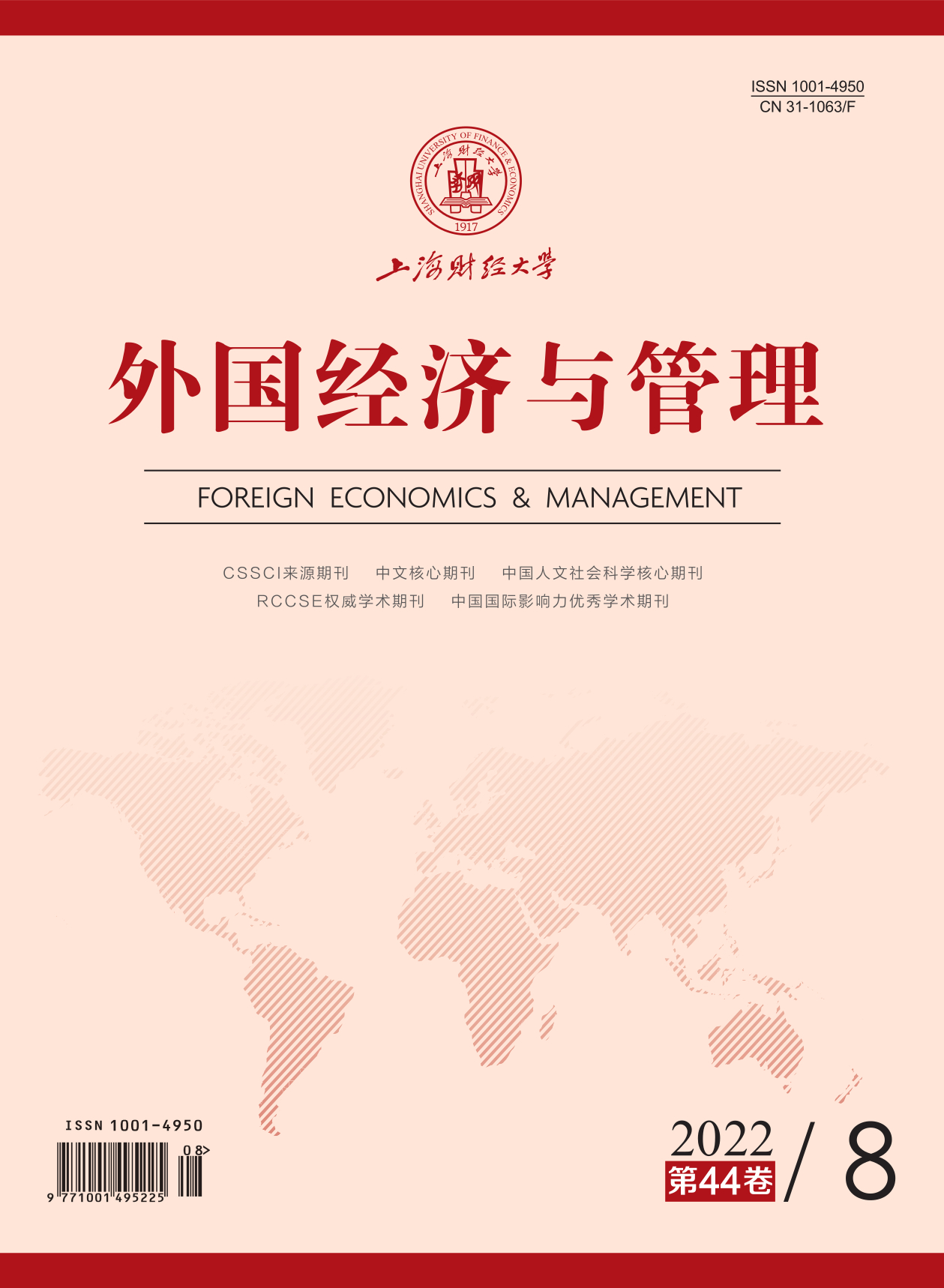代际创业是破解家族企业传承困境和提供创新动力的重要手段,资源动员是创业者组织资源以执行创业机会的过程。如何优化家庭系统,提升创二代的资源动员水平是商业家族基业长青所面临的重要问题。本研究基于“结构—互动—功能”框架,采用fsQCA方法,从组态视角分析了家庭系统与创二代资源动员的关系。研究发现:(1)单个家庭要素并不构成高水平资源动员的必要条件,良性组合的家庭系统才能产生高水平的资源动员;(2)父母提供创业辅导加情感支持的独生子女家庭,或鼓励子女另立门户的多子女家庭,更容易产生高水平的资源动员组态;反之,代际情感疏离加父母放任试错的独生子女家庭,或引发子女间资源竞争的多子女家庭,更容易形成非高水平的资源动员组态;(3)导致高水平资源动员的家庭因素组合,并不是非高水平资源动员家庭因素组合的反面,这种因果非对称性显示了家庭系统复杂的、异质性的影响机制。本研究引入组态视角,探究家庭多要素组合对于创二代资源动员的影响,揭示家族培养高水平继任者的多重路径,具有理论指导与实践意义。
家族异质性、资源动员与代际创业
摘要
参考文献
1 陈文婷. 家族企业跨代际创业传承研究——基于资源观视角的考察[J]. 东北财经大学学报,2012, (4): 3-9. DOI:10.3969/j.issn.1008-4096.2012.04.001
2 杜运周, 贾良定. 组态视角与定性比较分析(QCA): 管理学研究的一条新道路[J]. 管理世界,2017, (6): 155-167. DOI:10.3969/j.issn.1002-5502.2017.06.011
3 杜运周, 李佳馨, 刘秋辰等. 复杂动态视角下的组态理论与QCA方法: 研究进展与未来方向[J]. 管理世界,2021, 37(3): 180-197, 12-13. DOI:10.3969/j.issn.1002-5502.2021.03.012
6 李新春, 贺小刚, 邹立凯. 家族企业研究: 理论进展与未来展望[J]. 管理世界,2020, 36(11): 207-229. DOI:10.3969/j.issn.1002-5502.2020.11.015
7 李新春, 张鹏翔, 叶文平. 家族企业跨代资源整合与组合创业[J]. 管理科学学报,2016, 19(11): 1-17. DOI:10.3969/j.issn.1007-9807.2016.11.002
8 王爽, 张聪群, 陈士慧等. 家族二代的接班意愿从何而来?——基于家族系统理论的定性比较分析[J]. 管理评论,2020, 32(11): 233-244. DOI:10.14120/j.cnki.cn11-5057/f.2020.11.019
9 王扬眉. 家族企业继承人创业成长金字塔模型——基于个人意义构建视角的多案例研究[J]. 管理世界,2019, 35(2): 168-184, 200. DOI:10.3969/j.issn.1002-5502.2019.02.012
11 吴炳德, 陈士慧, 陈凌. 制度变迁与女性创业者崛起——来自LN家族的案例[J]. 南方经济,2017b, 36(3): 23-41. DOI:10.3969/j.issn.1000-6249.2017.03.002
15 祝振铎, 李新春, 叶文平. 扶上马、送一程: 家族企业代际传承中的战略变革与父爱主义[J]. 管理世界,2018, 11: 65-79, 196. DOI:10.3969/j.issn.1002-5502.2018.11.007
17 Au K, Chiang F F T, Birtch T A, et al. Incubating the next generation to venture: The case of a family business in Hong Kong[J]. Asia Pacific Journal of Management,2013, 30(3): 749-767. DOI:10.1007/s10490-012-9331-7
18 Chen S H, Fang H C, MacKenzie N G, et al. Female leadership in contemporary Chinese family firms[J]. Asia Pacific Journal of Management,2018, 35(1): 181-211. DOI:10.1007/s10490-017-9515-2
19 Cherchem N. The relationship between organizational culture and entrepreneurial orientation in family firms: Does generational involvement matter?[J]. Journal of Family Business Strategy,2017, 8(2): 87-98. DOI:10.1016/j.jfbs.2017.04.001
20 Clough D R, Fang T P, Vissa B, et al. Turning lead into gold: How do entrepreneurs mobilize resources to exploit opportunities?[J]. Academy of Management Annals,2019, 13(1): 240-271. DOI:10.5465/annals.2016.0132
21 Colli A, García-Canal E, Guillén M F. Family character and international entrepreneurship: A historical comparison of Italian and Spanish ‘new multinationals’[J]. Business History,2013, 55(1): 119-138. DOI:10.1080/00076791.2012.687536
22 Combs J G, Shanine K K, Burrows S, et al. What do we know about business families? Setting the stage for leveraging family science theories[J]. Family Business Review,2020, 33(1): 38-63. DOI:10.1177/0894486519863508
23 Daspit J J, Chrisman J J, Ashton T, et al. Family firm heterogeneity: A definition, common themes, scholarly progress, and directions forward[J]. Family Business Review,2021, 34(3): 296-322. DOI:10.1177/08944865211008350
24 Douglas E J, Shepherd D A, Prentice C. Using fuzzy-set qualitative comparative analysis for a finer-grained understanding of entrepreneurship[J]. Journal of Business Venturing,2020, 35(1): 105970. DOI:10.1016/j.jbusvent.2019.105970
25 Hallen B L, Katila R, Rosenberger J D. How do social defenses work? A resource-dependence lens on technology ventures, venture capital investors, and corporate relationships[J]. Academy of Management Journal,2014, 57(4): 1078-1101. DOI:10.5465/amj.2012.0003
26 Jaskiewicz P, Combs J G, Rau S B. Entrepreneurial legacy: Toward a theory of how some family firms nurture transgenerational entrepreneurship[J]. Journal of Business Venturing,2015, 30(1): 29-49. DOI:10.1016/j.jbusvent.2014.07.001
27 Jaskiewicz P, Combs J G, Shanine K K, et al. Introducing the family: A review of family science with implications for management research[J]. Academy of Management Annals,2017, 11(1): 309-341. DOI:10.5465/annals.2014.0053
28 Jaskiewicz P, Dyer W G. Addressing the elephant in the room: Disentangling family heterogeneity to advance family business research[J]. Family Business Review,2017, 30(2): 111-118. DOI:10.1177/0894486517700469
29 Jaskiewicz P, Neubaum D O, De Massis A, et al. The adulthood of family business research through inbound and outbound theorizing[J]. Family Business Review,2020, 33(1): 10-17. DOI:10.1177/0894486520904461
30 Pittino D, Visintin F, Lauto G. Fly away from the nest? A configurational analysis of family embeddedness and individual attributes in the entrepreneurial entry decision by next-generation members[J]. Family Business Review,2018, 31(3): 271-294. DOI:10.1177/0894486518773867
31 Reay T, Jaskiewicz P, Hinings C R. How family, business, and community logics shape family firm behavior and “rules of the game” in an organizational field[J]. Family Business Review,2015, 28(4): 292-311. DOI:10.1177/0894486515577513
33 Schenkel M T, Yoo S S, Kim J. Not all created equal: Examining the impact of birth order and role identity among descendant CEO sons on family firm performance[J]. Family Business Review,2016, 29(4): 380-400. DOI:10.1177/0894486516659170
34 Waldkirch M, Kammerlander N, Wiedeler C. Configurations for corporate venture innovation: Investigating the role of the dominant coalition[J]. Journal of Business Venturing,2021, 36(5): 106137. DOI:10.1016/j.jbusvent.2021.106137
35 Wang D, Zhang Z Y. Disassembling the influences of perceived family relational conflict on business family offspring’s intrapreneurial intentions[J]. International Entrepreneurship and Management Journal,2022, 18(1): 153-189. DOI:10.1007/s11365-021-00747-5
引用本文
陈士慧, 何周丽, 吴炳德, 等. 家族异质性、资源动员与代际创业[J]. 外国经济与管理, 2022, 44(8): 57-72.
导出参考文献,格式为:





 8815
8815  3142
3142

